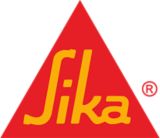IMPORTANT
Unrolling at low temperatures
At low temperatures, the membrane becomes less flexible.
- Be careful when unrolling to avoid damaging the membrane.
IMPORTANT
Damage through footwear
Footwear with spikes or sharp protrusions may puncture the membrane.
- Use footwear with a flat profile when walking over the membrane.
IMPORTANT
Damage through overheating
The polyester melts at +260 °C. If it is damaged through overheating, the membrane becomes unusable.
- Keep moving the flame while torching to avoid overheating the membrane.
IMPORTANT
Reduced adhesion through insufficient heating
Make sure to heat the membrane sufficiently. If it is not sufficiently heated, the adhesion to the substrate, between layers or on the overlaps will be reduced.
- If the membrane does not adhere to other elements, lift and retorch the unbonded areas.
IMPORTANT
Application at less than +5 °C
When applying the membranes at temperatures lower than +5 °C, use heating equipment to ensure that the substrate temperature is within the given temperature range.
IMPORTANT
Application on sloped surfaces
For slopes with an inclination greater than 15 %, multi-layered roofs must be carefully designed and, if necessary, integrated with mechanical fastenings.
Seasonal symbol
Note: If a seasonal symbol is printed on the roll’s label, it is advisable to use the membrane during the indicated season.
Tackiness at high temperatures
Note: When laying the membrane at high temperatures, the integral adhesive will become 'tacky' and may restrict laying operations.
ALIGNMENT
IMPORTANT
Avoid coinciding joints
To avoid coinciding joints, lay the membranes parallel to one another. When applying on another bituminous membrane, make sure to straddle the overlaps of the previous layer.
- Unroll the membrane.
- Align the membrane.
- Re-roll the membrane before application.
MEMBRANE OVERLAPS
- Overlap the membranes by a minimum of 100 mm on the sides and 150 mm on each end or as specified by the supplier.
- At the end overlap, cut off a corner measuring 100 mm per side at an angle of 45°.
FASTENING
When used as a roofing sheet, the membrane can be mechanically fixed to the substrate by using the correct type of fasteners.
The number of fixings, type and position depend on wind uplift forces to be resisted, pull-out strength of the fixing screws, the elastic limit of the membrane and the appropriate safety factors.
Contact Sika Technical Service for additional information.
Suitable substrates for fastening
TORCHING
- Heat the substrate and the backing film on the underside of the membrane with a gas burner.
→ When the backing film starts to melt, the membrane is ready to stick.
2. Roll the heated membrane forward and press it firmly against the substrate to bond it.
3. Make sure a bead of melted bitumen is visible along the full length of the overlap sides and ends when laying.
Suitable substrates for torching
DETAILING
- Use a sharp knife to cut in all details such as internal and external corners, upstands, vent pipes, drains, support metalwork etc.
Refer to the relevant method statement for further information on detailing.

